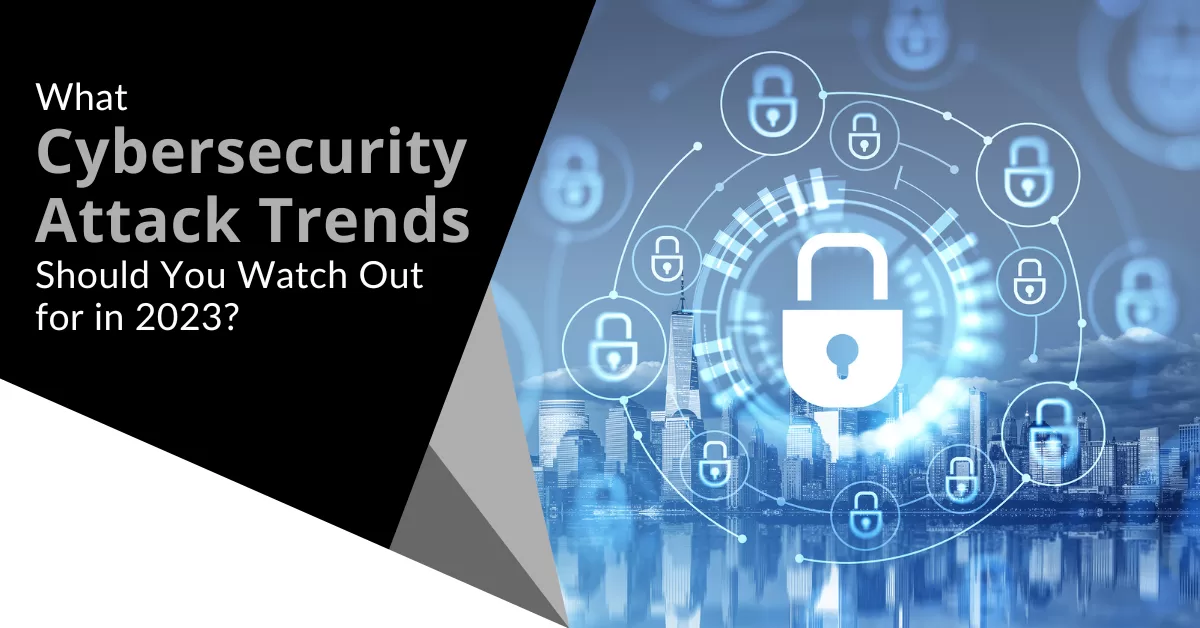The new year has just begun and it’s time to renew your plans for what’s possible in 2023. It’s also a time when you need to plan for resilience against pervasive cyberattacks.
68% of surveyed executives believe that cybersecurity risks are increasing. you have a good reason. Attacks are becoming more sophisticated. They are also often carried out by large criminal groups. These criminal organisations treat these attacks like a business.
In 2021, the average number of global cyberattacks increased by 15.1%.
Monitoring attack trends is critical to protecting your business in the year ahead. What new methods are hackers using? What types of attacks are becoming more common?
These are essential things to know. It helps you better update your IT security to reduce the risk of data breaches and malware infections.
We pulled out the security glass ball for this year. We also researched what cybersecurity professionals expect. Attack trends to watch out for include:
Attacks on 5G Devices
The last few years have seen a 5G frenzy around the world. It’s finally starting to deliver on its promise of ultra-fast internet. Since the vendor is building the infrastructure, we can assume that this is a likely area of attack.
Hackers want to take advantage of 5G hardware used in routers, mobile devices and PCs. Whenever you develop or use new technology like this, there will always be vulnerabilities in the code. This is precisely what hackers want to exploit.
Be prepared by being aware of the firmware security of the devices you buy and updating them regularly. This is especially true when it comes to 5G-enabled devices. Some manufacturers build better firmware security into their designs than others. When buying new equipment, be sure to ask about it.
One Time Password (OTP) Bypass
This alarming new trend aims to bypass one of the best forms of account security. Multi-factor authentication (MFA) is known to be very effective in preventing unauthorized login attempts. Even if a criminal knows your password, you can stop them from taking over your account. Hackers try to bypass MFA in various ways:
- Token Reuse: Access the recent user’s OTP and try to reuse it.
- Share Unused Tokens: The hacker uses his account to get her OTP. Then attempt using this exact OTP with another account.
- Leaked Tokens: Use of OTP tokens leaked via web applications.
- Password reset functionality: Hackers use phishing attacks to trick users into resetting their passwords. Then trying to gain OTP code via SMS or email.
Attacks Surrounding World Events
The volume of cyberattacks increased by almost 600% during the pandemic. Large criminal hacking groups have found world events and disasters very lucrative.
They launch phishing campaigns for world events. Attacks come in everything from the last hurricanes and typhoons to the war in Ukraine. Unsuspecting users often fall for these scams because they are often distracted by the crisis.
Special attention should be paid to scams related to such events. They often use social engineering tactics such as sad pictures to manipulate people’s emotions.
Smishing and Attacks Against Mobile Devices
Mobile devices are almost everywhere these days. Cybercriminals never lose this direct connection with potential victims. Look for more mobile-based attacks, including SMS-based phishing (“smishing”)
Many people do not expect to receive fake messages to their personal numbers. But cell phone numbers aren’t as private as they used to be. Hackers can buy lists filled with personal numbers online. Then create a compelling fake text that looks like a shipping notice or receipt. One wrong click is enough to compromise your account or data.
Mobile malware is also on the rise. In the first few months of 2022, malware targeting mobile increased by 500%. Using a good mobile anti-malware is important but also DNS filters and more.
Advanced Phishing Using AI and Machine Learning
It’s not so easy to spot a phishing email these days. Previously, most contained misspellings and grainy images. Some still are, but most are not.
Criminal groups are using AI and machine learning to improve phishing today. Not only does it look exactly like authentic branded emails, but it’s also personalized. Hackers use these tactics to score more victims much faster than in previous months.
Schedule a Cybersecurity Audit Today
Ar you and your business prepared for the cyber threats coming in 2023? Don’t wait to find out the hard way! Give us a call and schedule a cybersecurity check-up to stay one step ahead of digital criminals.


Comments are closed